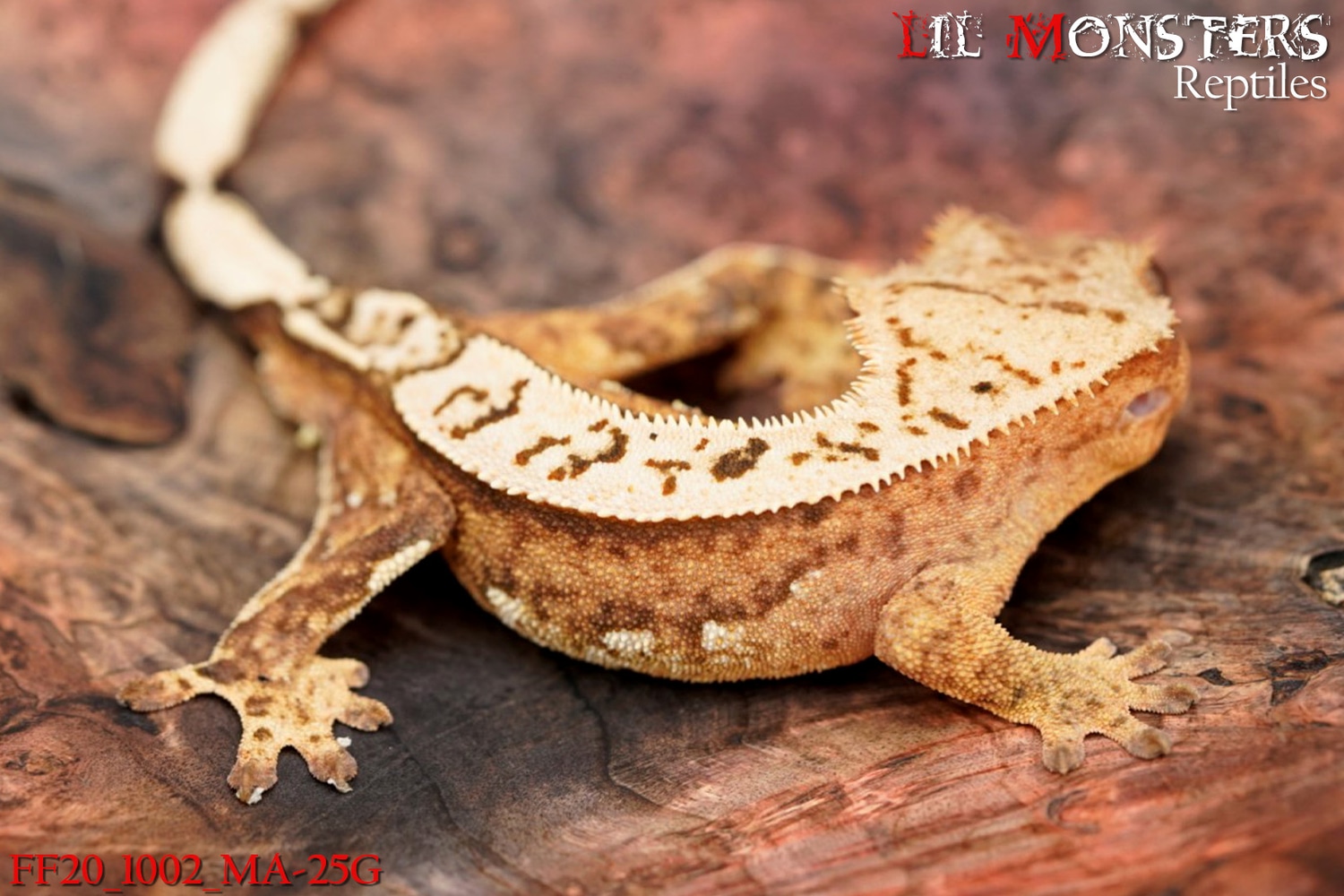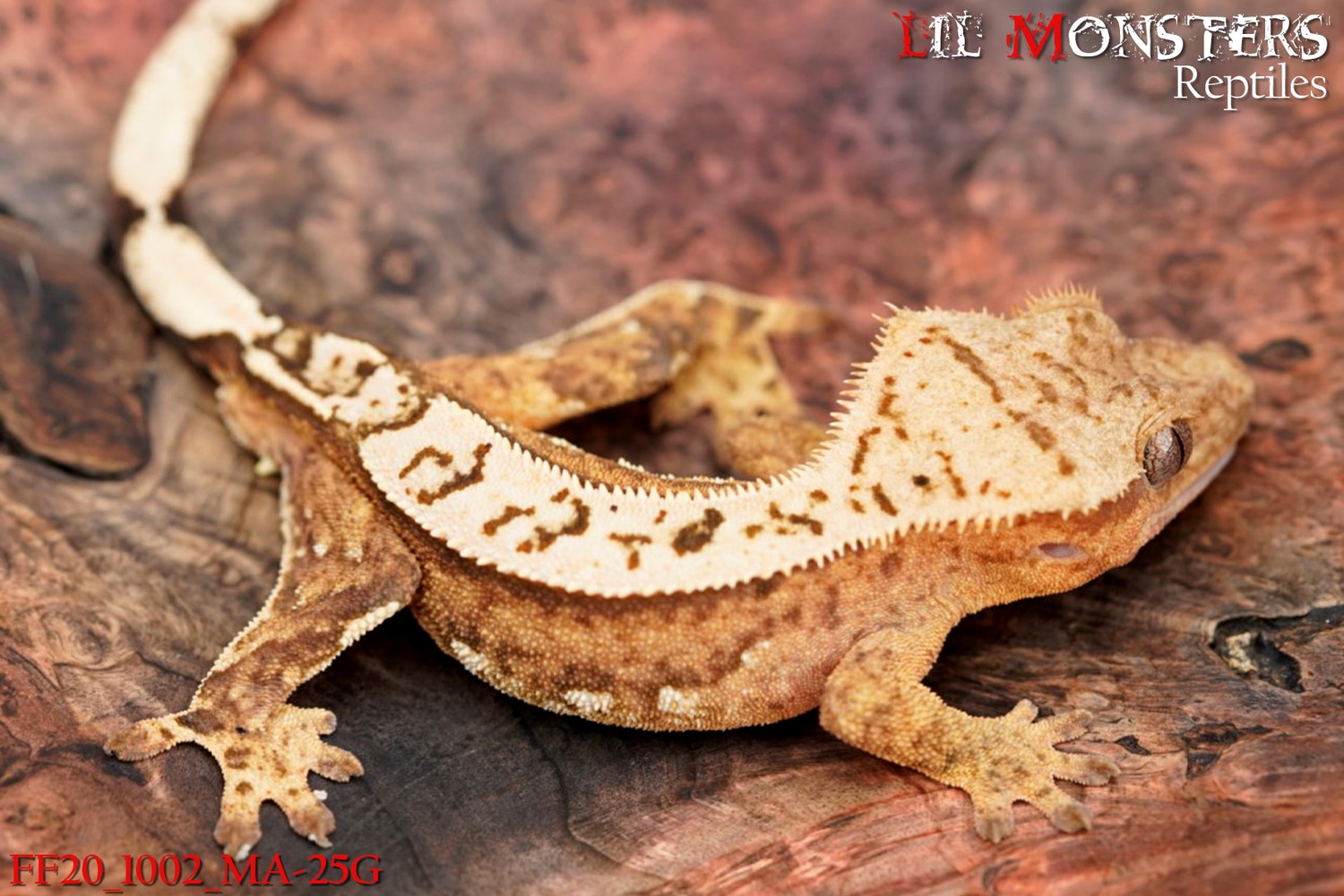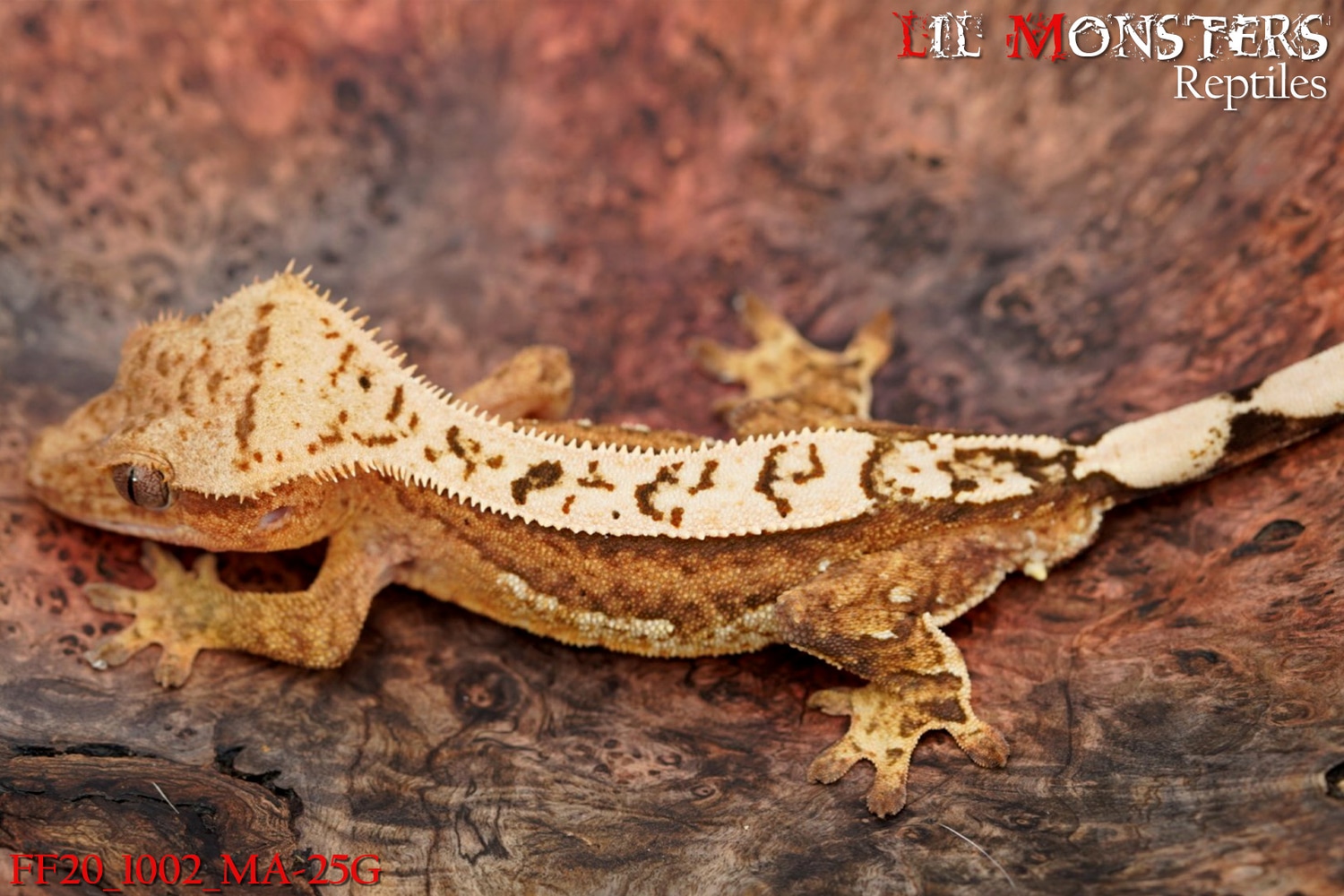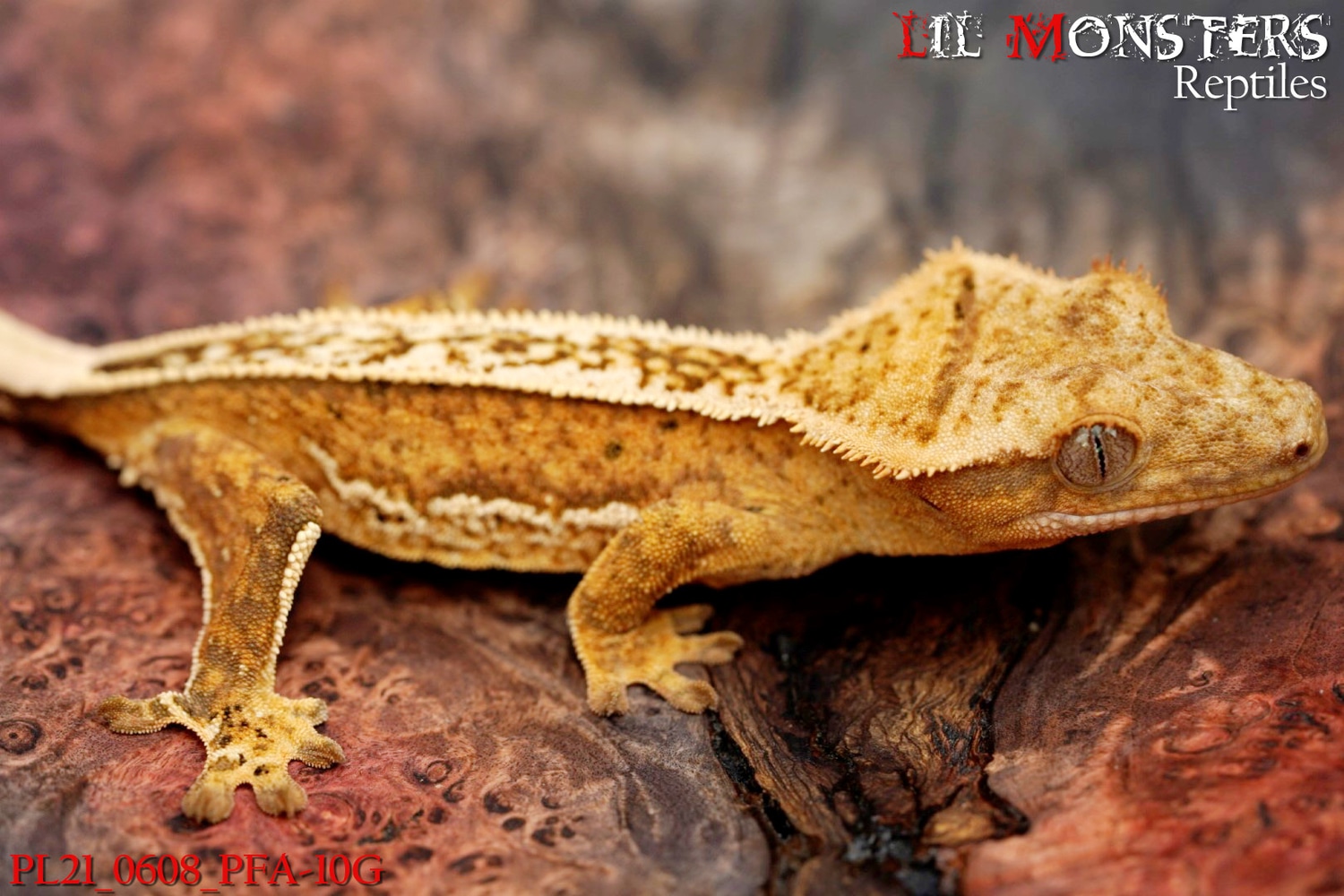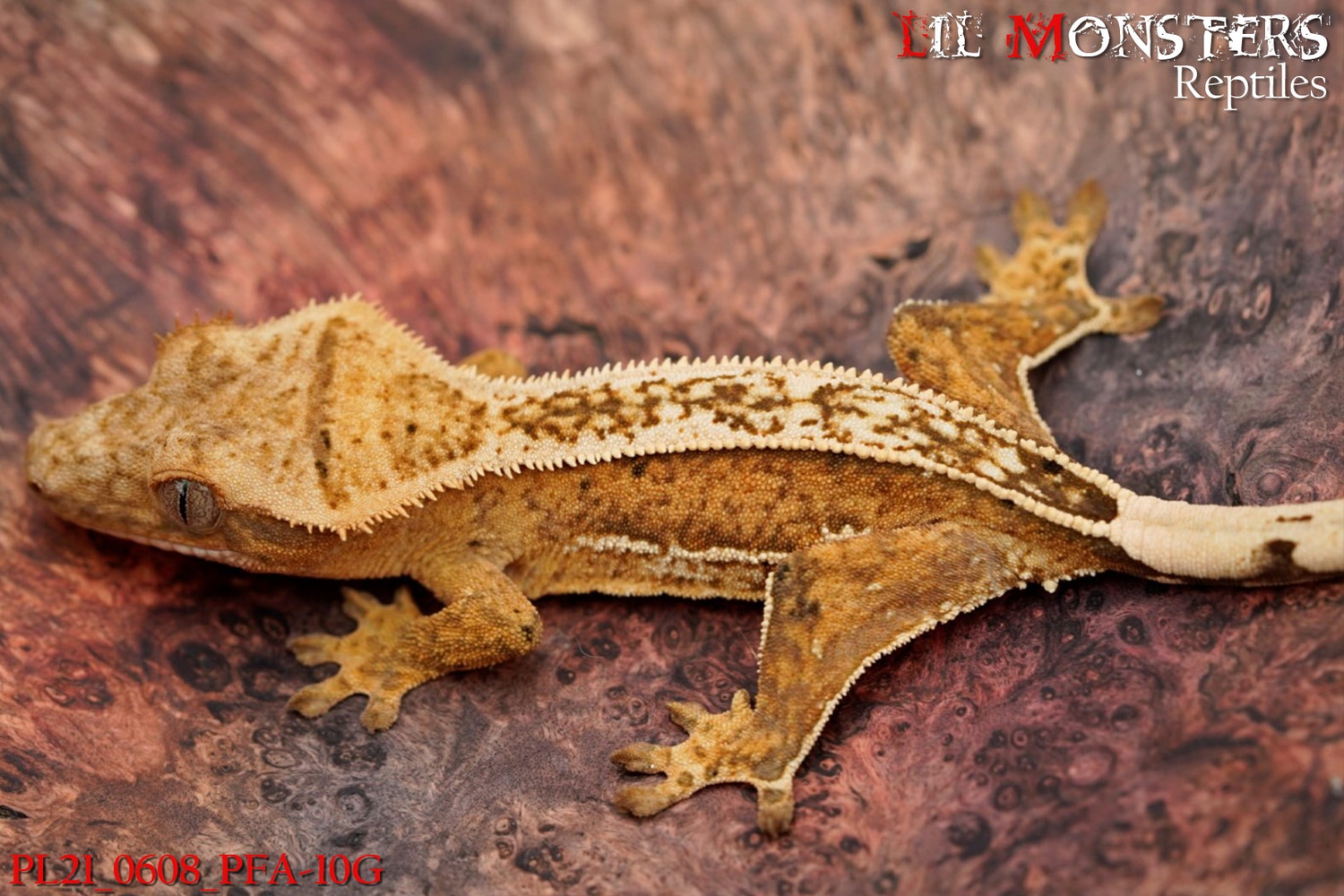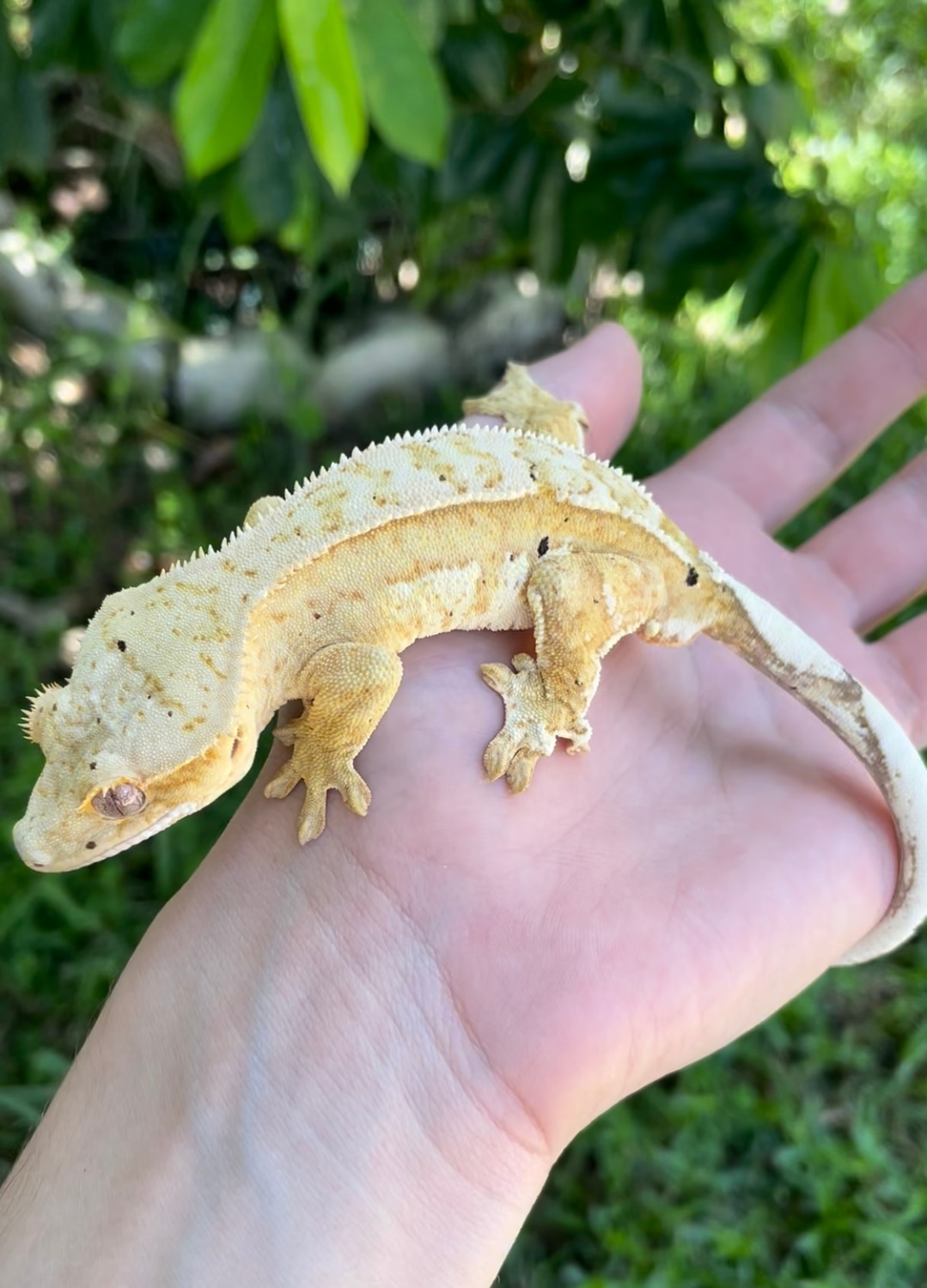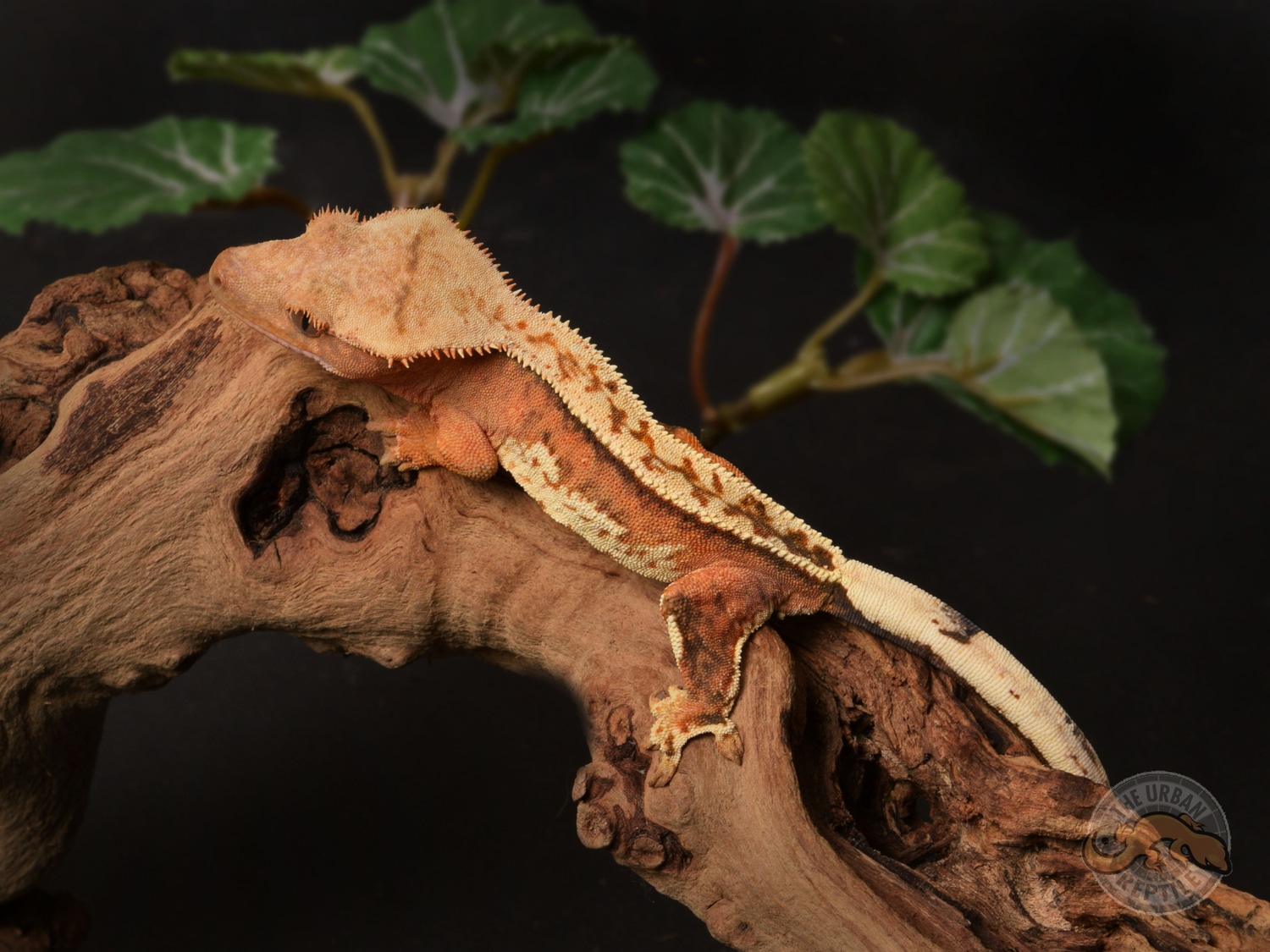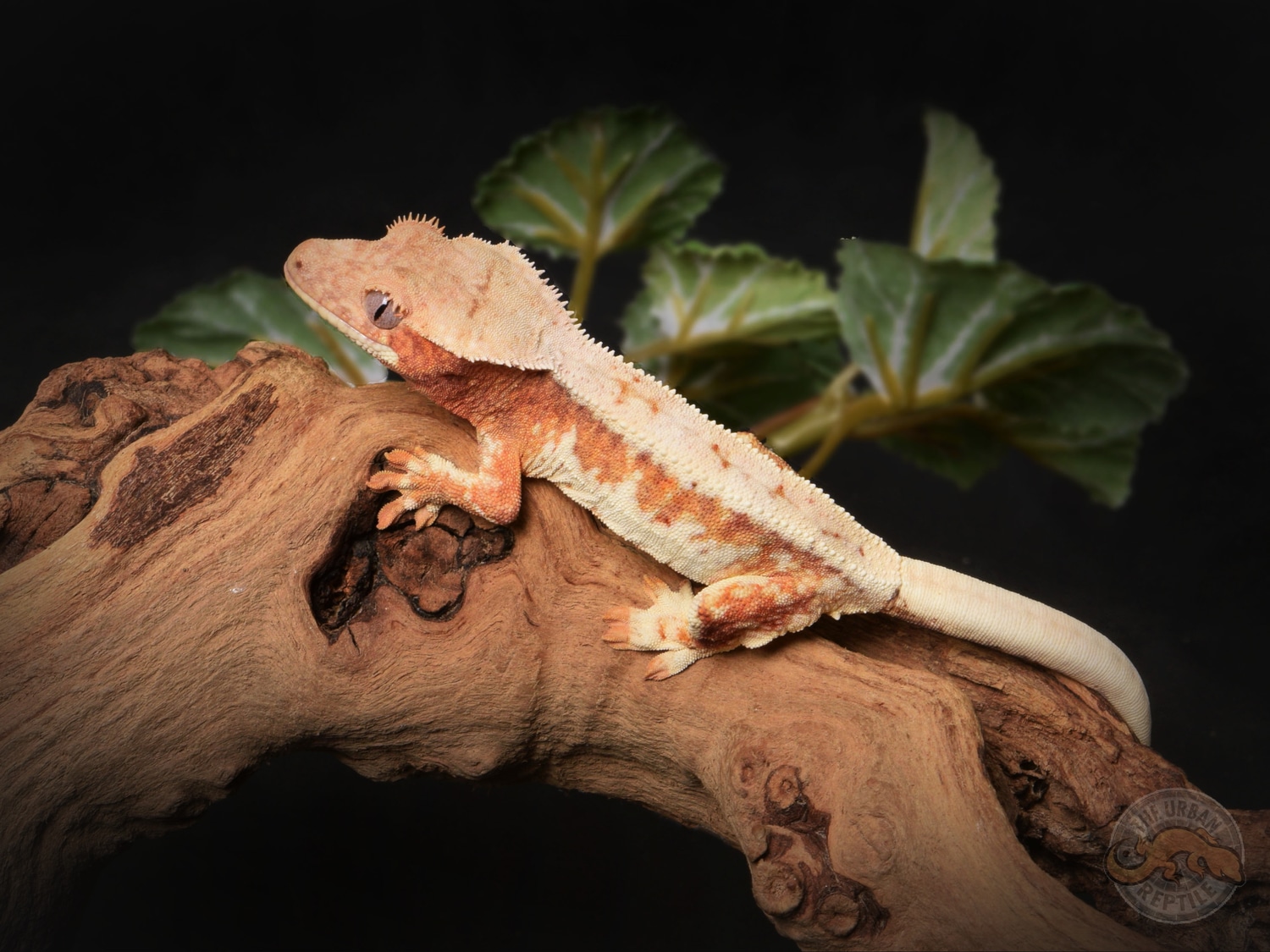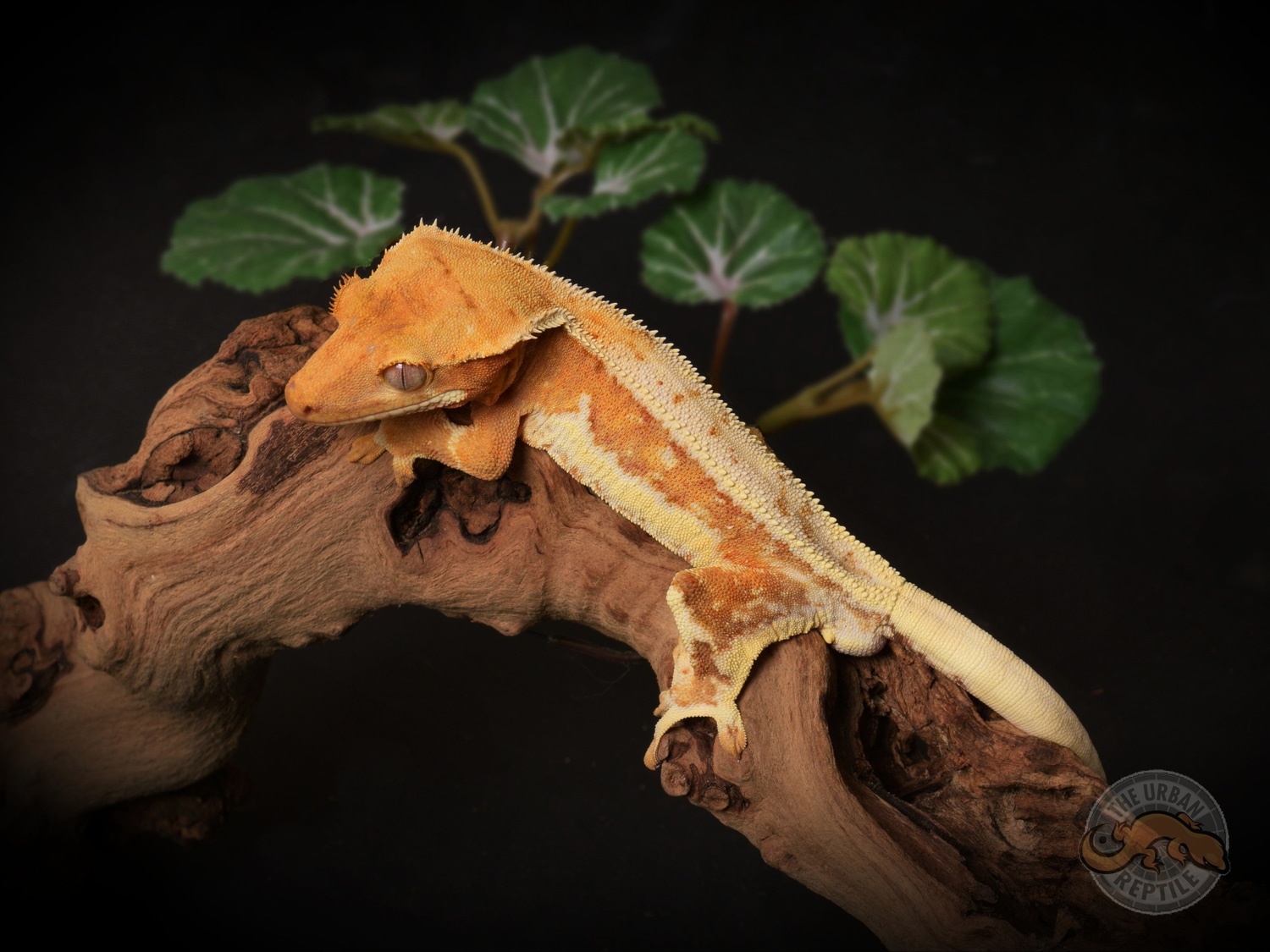Creamsicle
Type: Polygenic
Issues: N/A
First Produced In: Unknown
Availability: Lower
Last Updated: 2023-04-23
Do you have any suggestions or corrections for this article?
Click here to contribute feedback
About
Creamsicle is an interesting one and something that was debated in Foundation Genetics for a bit and we feel there are a few ways to get to a Creamsicle. They all have 2 main characteristics WP or White pattern and an orange “creamsicle ice cream” coloration. So this particular morph although somewhat subjective should be reserved for the highest standard of classification.
History
No history yet.
Appearance
Body
Genetically the Animal is always going to be Yellow base, WP, and Hypo. Modifying genes like line-breeding or Tangerine can be used to turn the Yellow, orange like a creamsicle. The White or Cream pattern and dorsal color however should be light cream to paper white. With paper white being the best of the best. If the animal is cream there is a chance that that pattern color may turn yellow with age, especially if tangerine is used to turn the yellow base orange.
Controversy
Too many people call an animal creamsicle just because they see a 2-tone orange and somewhat cream to yellow distinction in color.
The subjective genetic part of this phenotype is that full coverage animals may look creamsicle but the black or lavender coloration that shows through in some areas like the cusp of the front legs or under the chin should disqualify it from getting the creamsicle title. The other portion is that some line breeding practices have yielded orange base animals and tangerine was not used to create the orange base color. Therfore, genetically there are a few routes one can take to produce consistent creamsicles.
Proven Lines
The Creamsicle morph has been a difficult and long sought-after phenotype to produce consistently. There are a few ways to create a Creamsicle. Both methods require a Yellow base animal as the basis for the morph. The second is hypo and the third component which contributes to two distinct looks is the orange coloration that may come from tangerine or red base influence. The first noted variant is a soft orange Creamsicle usually a solid coloration and comes in deep to light-colored hues. The second variant is what we like to refer to as Coral, this coloration under close inspection has hues of pink, orange, tangerine , and yellow all distinctly visible under a loupe or macro shot. The complexities of this phenotype are still a WIP and is likely due to allelic interactions of multiple traits and are considered an advanced base color morph.
